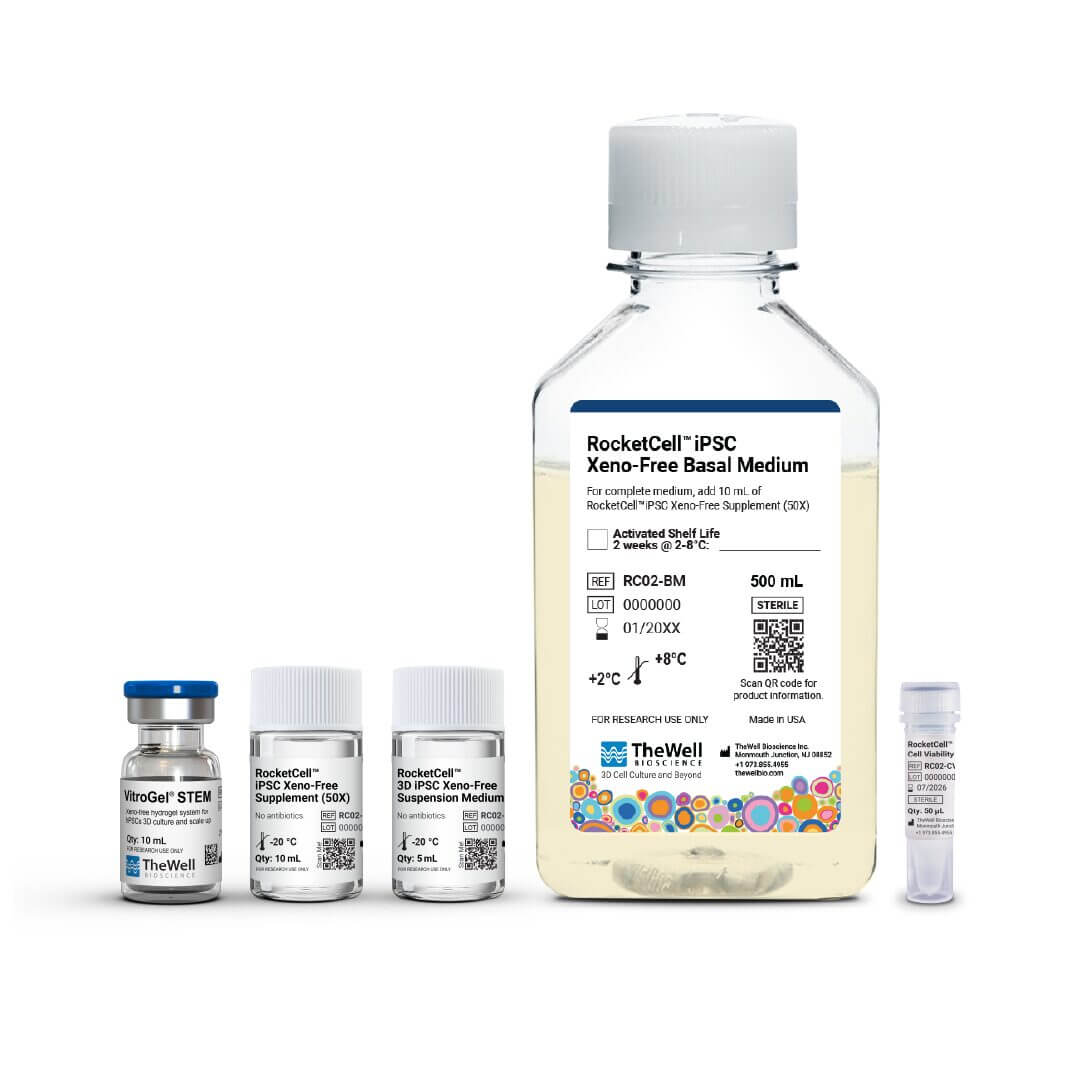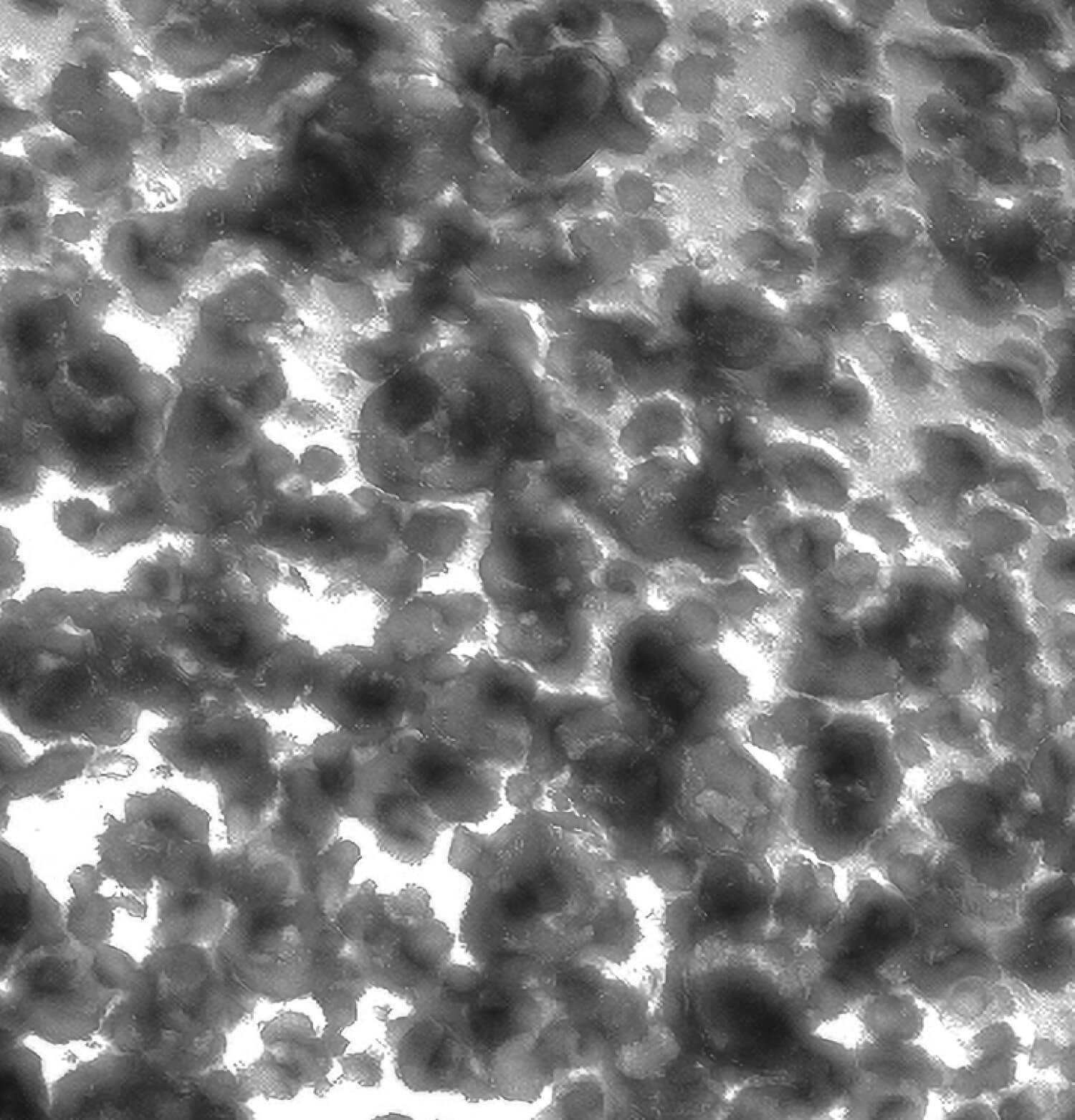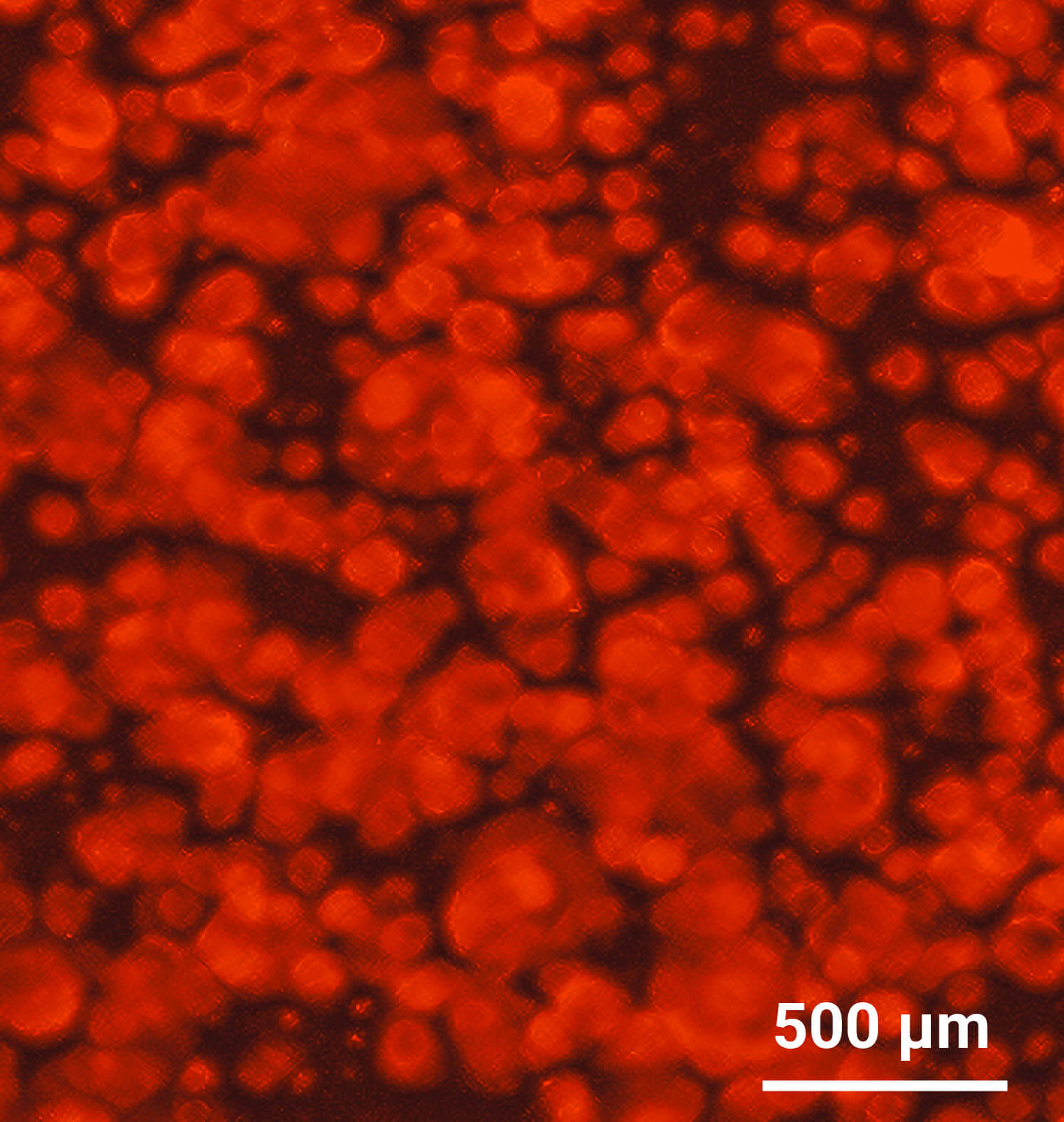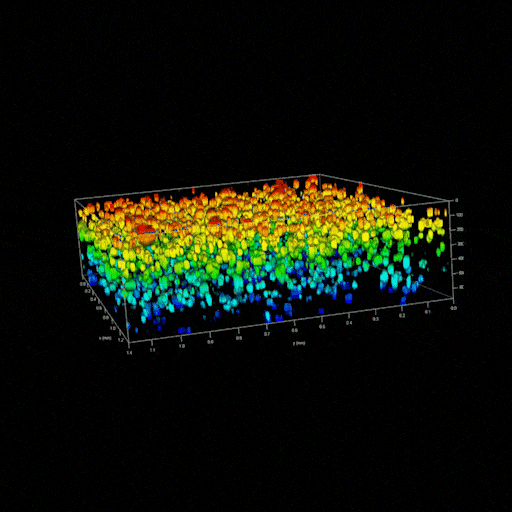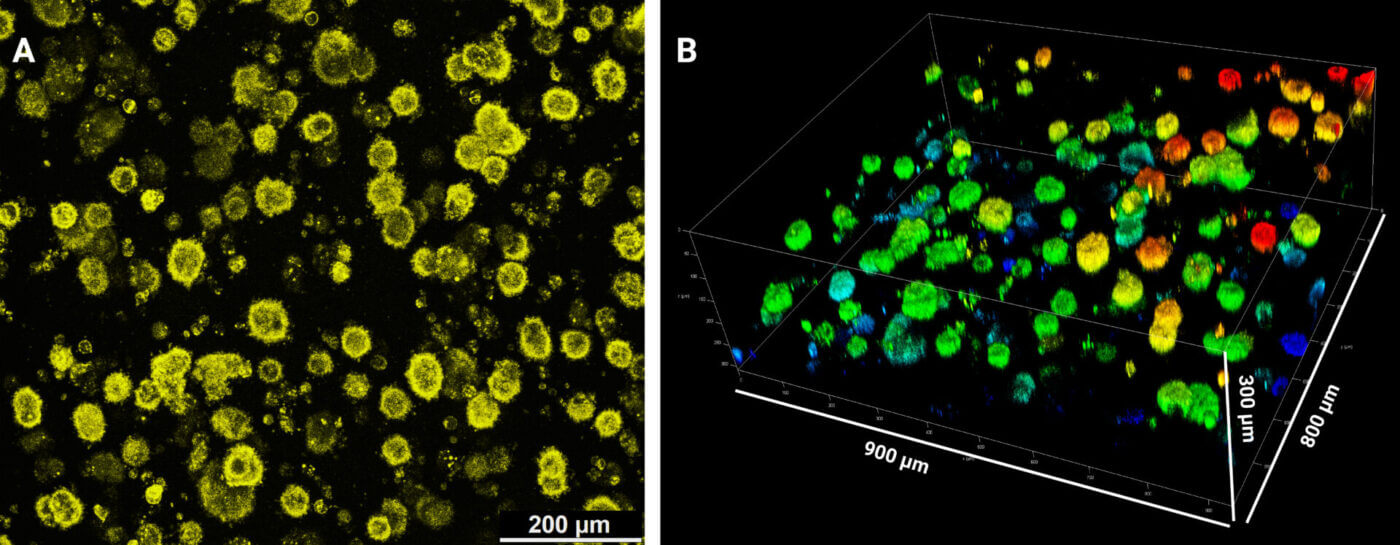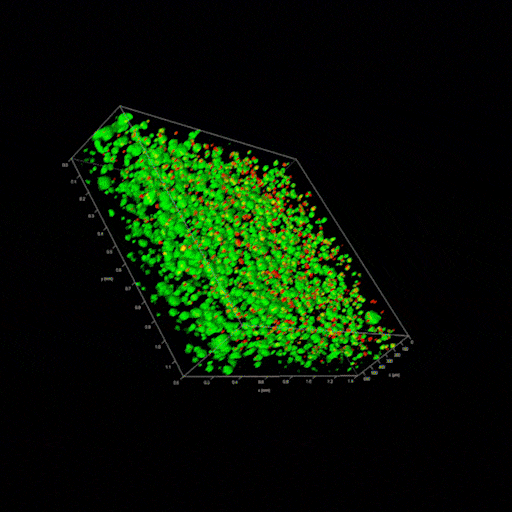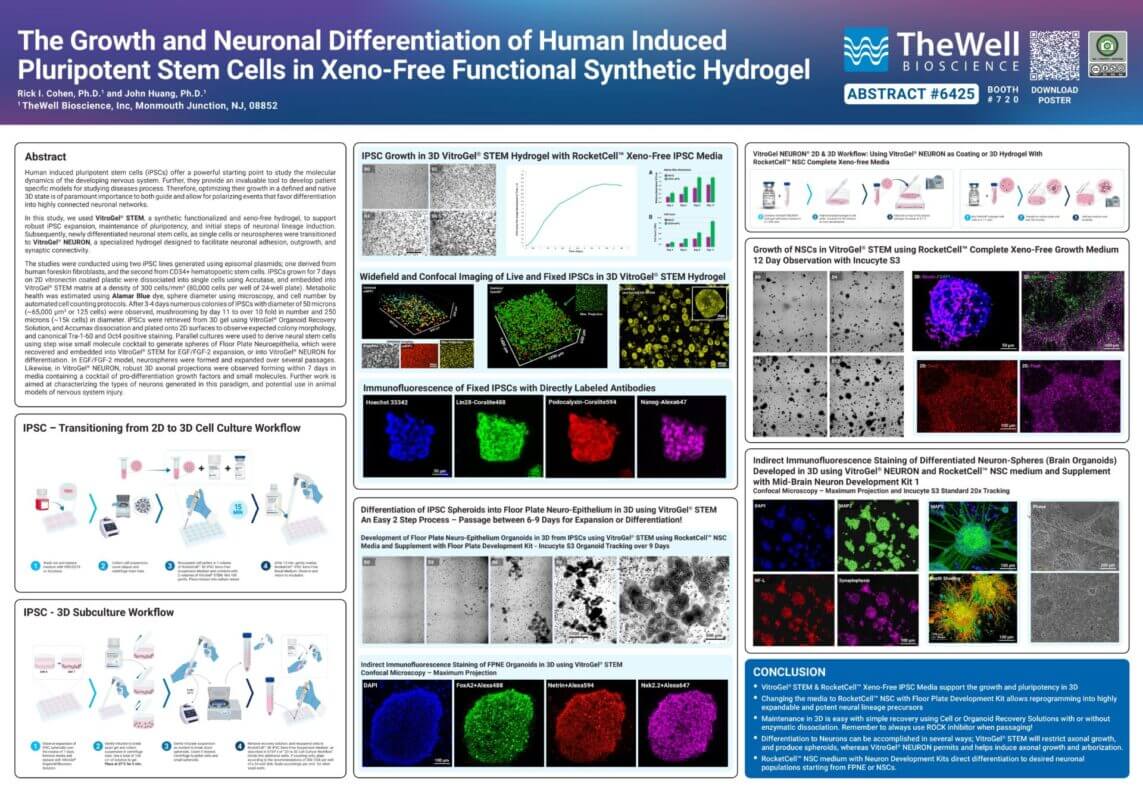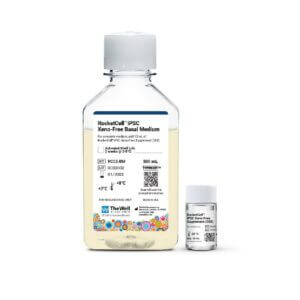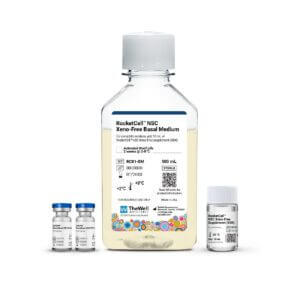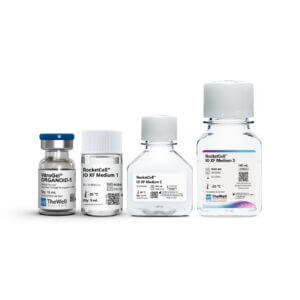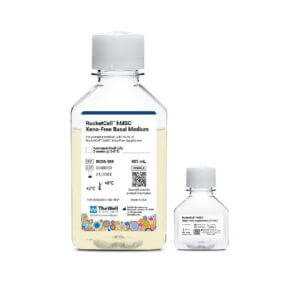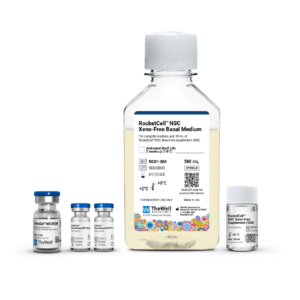All-in-one Complete System
Fully defined, xeno-free kit combining 3D hydrogel and growth medium for seamless pluripotent stem cell culture.
RocketCell™ 3D iPSC Xeno-Free Complete Growth Kit
An all-in-one optimized kit for 3D expansion of pluripotent stem cells
$799.00
RocketCell™ 3D iPSC Xeno-Free Complete Growth Kit
An all-in-one optimized kit for 3D expansion of pluripotent stem cells


Improves Cell Survival and Growth
Supports both single-cell and small-colony seeding, maintaining high post-passaging viability and consistent colony formation.

Weekend-Free Workflow
Alternate-day feeding schedule minimizes handling and supports consistent, long-term culture.
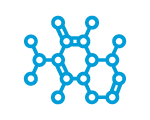
Xeno-Free and Chemically-Defined Composition
Ensures high reproducibility, stability, and regulatory compliance for advanced research and translational use.

High-Density 3D Culture Capability
3D hydrogel matrix supports up to 10x higher cell density than 2D culture, maximizing expansion efficiency.

Ready-to-use and Room Temperature Stable
Operated without pre-coating or thawing steps. Simple setup and easy to use.
The RocketCell™ 3D iPSC Xeno-Free Complete Growth Kit is an all-in-one, fully defined, animal-component-free system optimized to support the 3D expansion of pluripotent stem cells (iPSCs and hESCs) in VitroGel® STEM hydrogel. This innovative 3D culture system supports both single-cell and small-colony seeding while maintaining excellent post-passaging viability. It enables alternate-day feedings and a weekend-free schedule, providing flexibility for diverse research schedules.
Formulated with xeno-free, chemically defined components, the growth medium ensures high stability and potency for consistent, long-term performance. The kit has been rigorously validated with multiple pluripotent stem cell lines, producing uniform 3D colonies that retain key pluripotency markers, including Lin28, Oct4, Nanog, and Tra-1-60.
Unlike traditional 2D culture systems, this ready-to-use 3D culture kit operates at room temperature with no pre-coating required. The 3D hydrogel matrix supports up to 10X higher cell seeding density compared to 2D culture, enabling ultra-high expansion capacity while dramatically reducing medium consumption and culture vessel requirements.
The all-in-one kit includes:
- 1 10 mL VitroGel® STEM
- 1 x 5 mL, RocketCell™ 3D iPSC Xeno-Free Suspension Medium
- 1 x 50 µL, RocketCell™ Cell Viability Enhancer
- 1 x 500 mL, RocketCell™ iPSC Xeno-Free Basal Medium
- 1 x 10 mL, RocketCell™ iPSC Xeno-Free Supplement (50X)
For a xeno-free growth medium to support 3D expansion of pluripotent stem cells, use
RocketCell™ iPSC Xeno-Free Growth Medium↗
Specifications
| Use | 3D pluripotent stem cell cultures |
| Formulation | Xeno-free complete 3D culture medium kit |
| Injectability | Injectable hydrogel for in vivo studies and lab automation |
| Operation | Ready-to-use at room temperature |
| Cell Harvesting | VitroGel® Organoid Recovery Solution 5-15 min cell recovery |
| Shipping and Storage | Hydrogel: Ships at ambient temperature. Store at 2-8°C. Suspension Medium, Supplement, Enhancer: Ships with dry ice Store at -20°C. Basal Medium: Ships with ice pack. Store at 2-8°C. |
Common Challenges in Human iPSC 3D Cell Culture
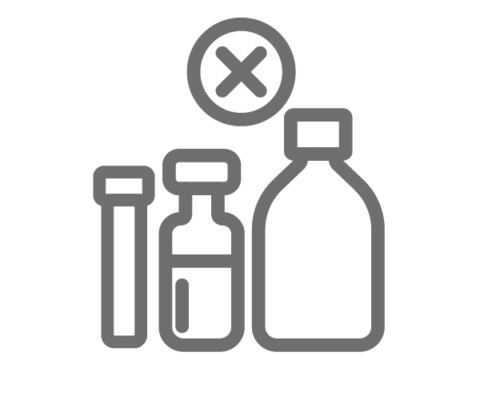
Lack of a complete, integrated system
Researchers often rely on separate matrices, media, and supplements from different sources, which creates inconsistency and increases workflow complexity.
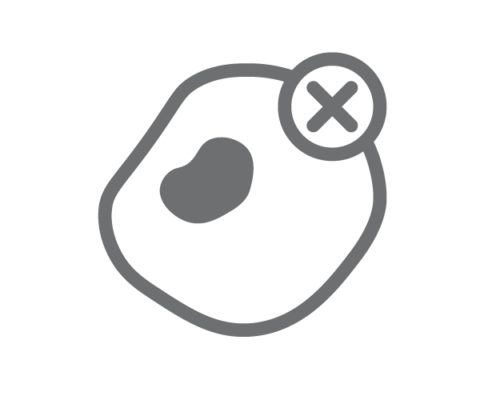
Poor single-cell survival and post-passaging viability
Dissociated iPSCs often lose viability when seeded as single cells or small colonies.
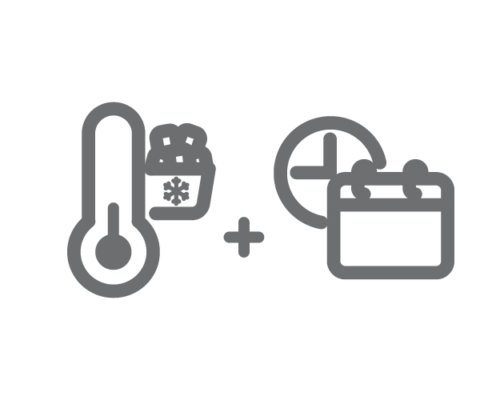
Labor-intensive and high-maintenance culture workflow
Frequent feedings and weekend maintenance limit flexibility and throughput.

Inconsistent performance and undefined materials
Animal-derived or poorly defined components introduce variability and compromise reproducibility.

Limited scalability and inefficient use of resources
Traditional systems have low seeding density and high media consumption, limiting expansion.
How RocketCell™ 3D iPSC Xeno-Free Complete Growth Kit Solves The Issues
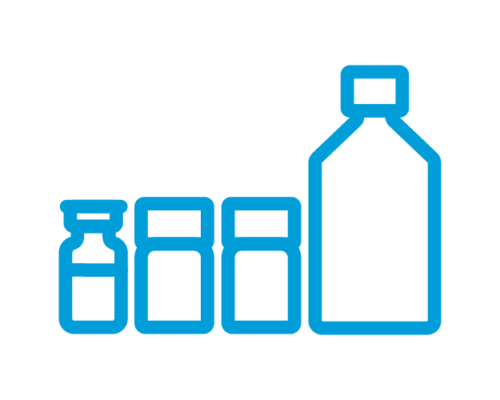
All-in-one complete system
Fully defined, xeno-free kit combining 3D hydrogel and growth medium for seamless pluripotent stem cell culture.
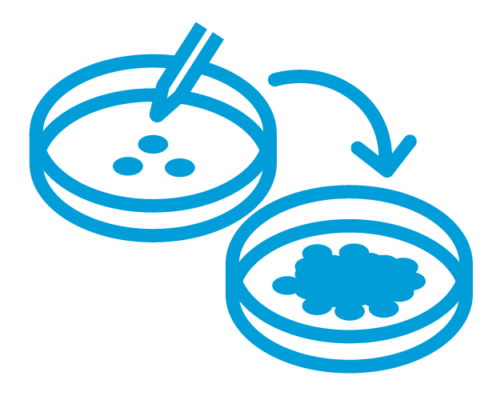
Improves cell survival and growth
Supports both single-cell and small-colony seeding, maintaining high post-passaging viability & consistent colony formation.

Weekend-free Workflow
An alternate-day feeding schedule minimizes handling and supports a consistent, long-term culture.

Xeno-free and chemically-defined composition
Ensures high reproducibility, stability, and regulatory compliance for advanced research and translational use.

High-density 3D culture capability
3D hydrogel matrix supports up to 10× higher cell density than 2D culture, maximizing expansion efficiency.
Protocols and Resources
![]() RocketCell™ 3D iPSC Xeno-Free Complete Growth Kit – Protocol
RocketCell™ 3D iPSC Xeno-Free Complete Growth Kit – Protocol
Product Documentation
![]() RocketCell™ 3D iPSC Xeno-Free Complete Growth Kit – Sale Sheet
RocketCell™ 3D iPSC Xeno-Free Complete Growth Kit – Sale Sheet
![]() Product Data Sheet
Product Data Sheet
Data and References
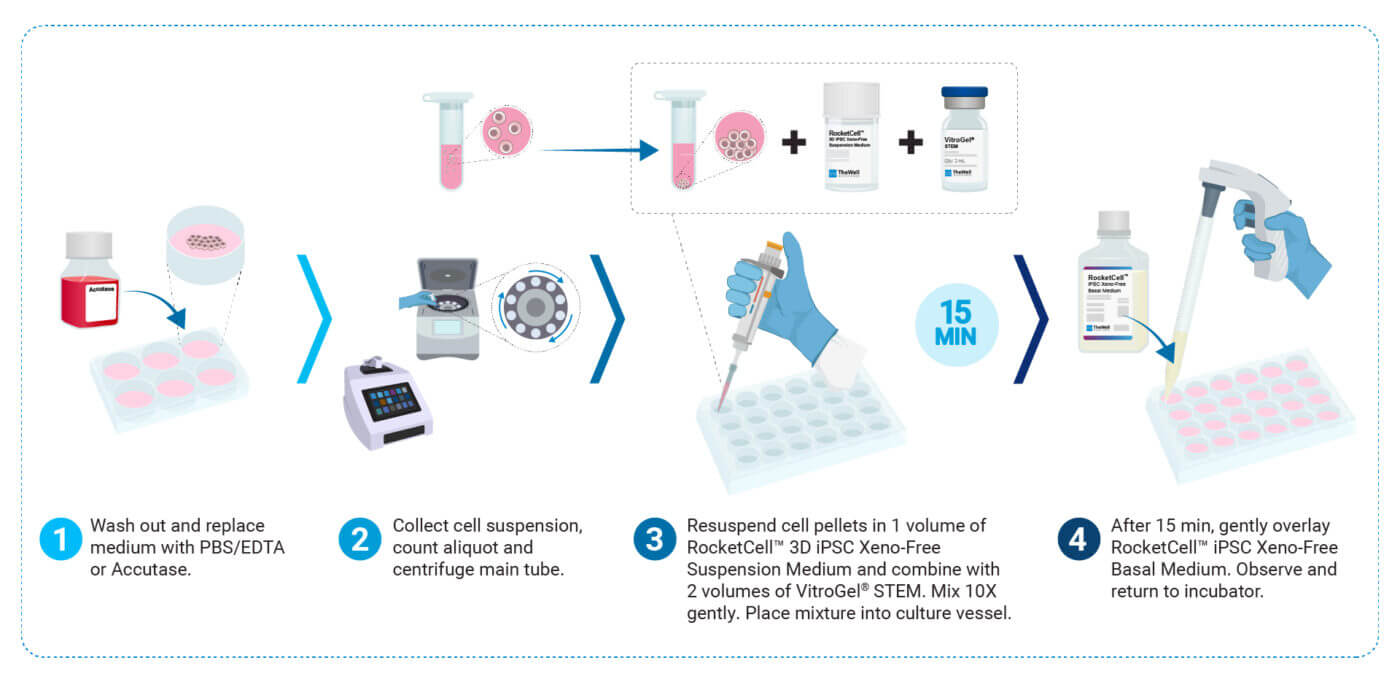
2D to 3D: CASE 1
Growth of iPSCs in VitroGel® STEM 3D Hydrogel
Passaging from 2D Source
Figure1: 3D Expansion of Human iPSCs in RocketCell™ 3D iPSC Xeno-Free Complete Growth Kit
A: Representative time-lapse micrographs show human iPSCs transitioning from single cells and small aggregates into uniform 3D spheroids within the VitroGel® STEM hydrogel (seeded cells from a 2D source on Day 0). The spheroids exhibit consistent morphology and reach diameters of approximately 85–100 μm after several days in culture. B: Quantitative analysis of spheroid growth demonstrates a steady increase in total spheroid area over time, reaching an average of nearly 300% expansion after 6.5 days, confirming robust and reproducible 3D proliferation under xeno-free culture conditions.
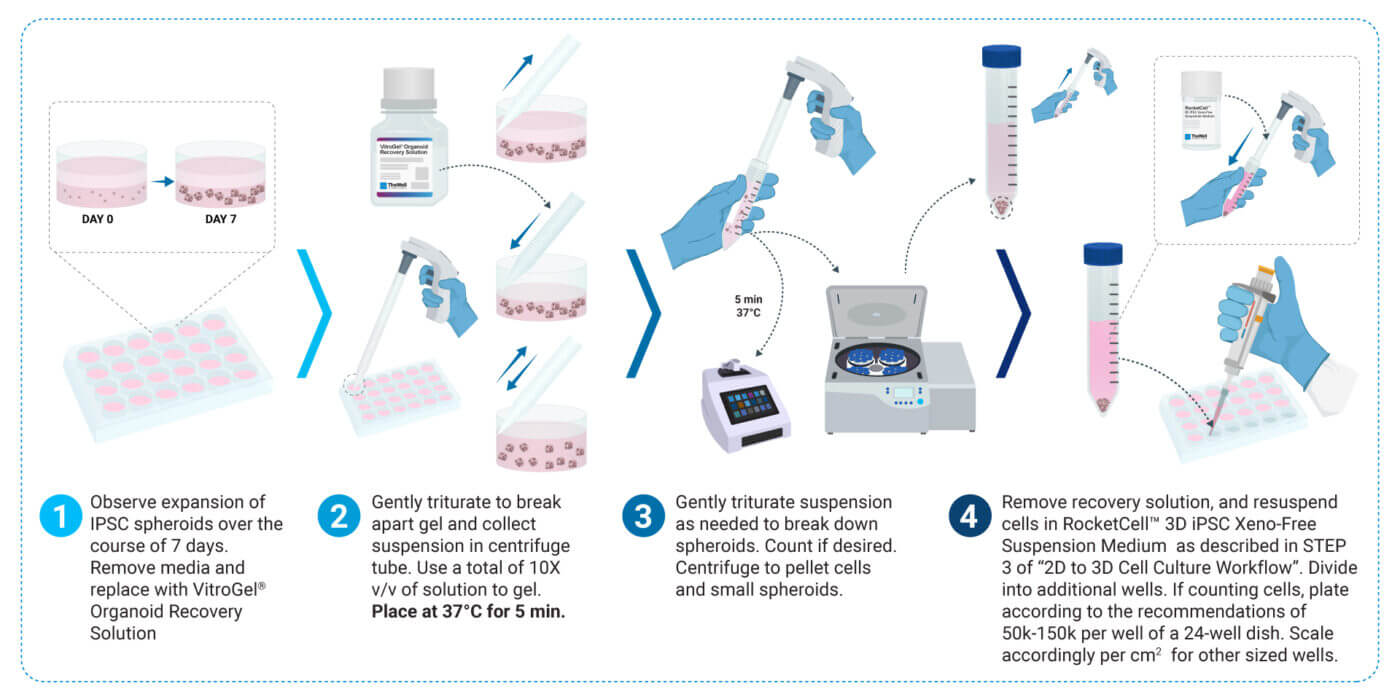
3D SUBCULTURE: CASE 1
Quantitative Assays using IPSCs Grown in VitroGel® STEM 3D Hydrogel
Alamar Blue Viability Dye Versus Automated Cell Counting
A

B
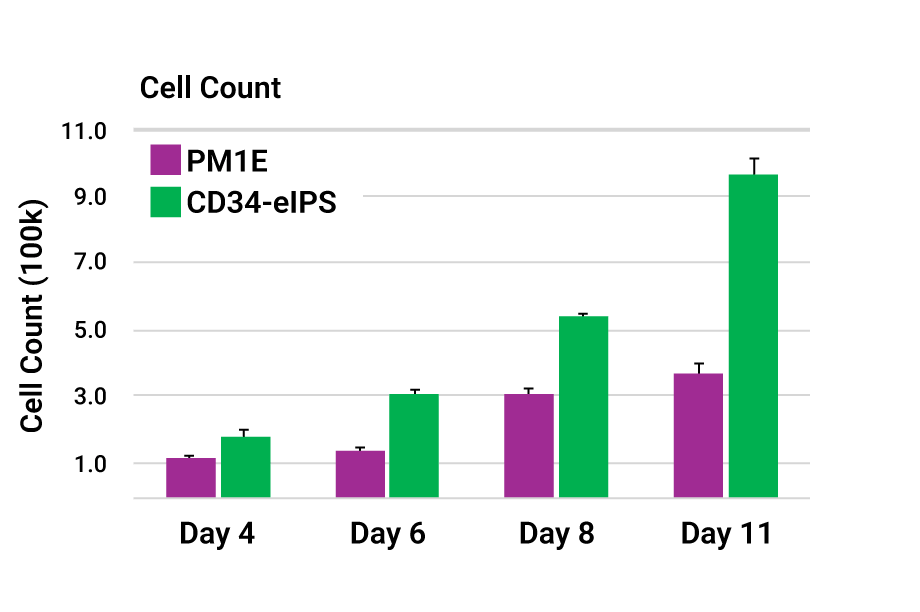
Figure 2. Quantitative Assessment of 3D iPSC Growth in RocketCell™ 3D iPSC Xeno-Free Complete Growth Kit
A: Alamar Blue absorbance assay showing a progressive increase in metabolic activity of iPSCs cultured in 3D, indicating robust cell proliferation and viability over the culture period. B: Corresponding cell count analysis confirming steady growth and expansion of iPSC spheroids within the VitroGel® STEM hydrogel, demonstrating the kit’s capability to support sustained, xeno-free 3D cell proliferation. These findings demonstrate that metabolic assays, such as Alamar Blue, can be used with IPSCs embedded in VitroGel® STEM hydrogel to estimate cell expansion, compared with recovering cells from the hydrogel and using traditional cell counting methods. These figures highlight that IPSCs can respond differently to the 3D environment, so grow better than others. The overall pattern of the two assays are similar. and it is well known that Alamar Blue assays can saturate. We see that at Day 11 in the CD34-eIPS line more than other.
3D SUBCULTURE: CASE 2
Imaging Fluorescently Labeled IPSCs Grown in VitroGel® STEM 3D Hydrogel
Widefield vs. Confocal Microscopy
Figure 3. Imaging of RFP-labeled human iPSCs (HFF-1VL-RFP, TheWell Bioscience) grown in RocketCell™ 3D iPSC Xeno-Free Complete Growth Kit.
iPSCs (100k/well) from 2D cultures were plated in 24-well, VitroPrime™ 3D Culture and Imaging Plates. After 7 days, the dishes were imaged on the Keyence BZX system (A, B) or on the Leica MICA (C, D). The Keyence system uses widefield illumination with a 1D sectioning filter to aid 3D imaging and allows 3D imaging of the IPSC spheroids in both brightfield (A) and fluorescence (B). In contrast, the MICA uses a traditional laser to capture in higher detail and render 3D models. On image D, the depth captured is 500 microns, within a field approximately 800 x 900 microns.
3D SUBCULTURE: CASE 3
Live EpCAM Cell Surface Immunostaining of IPSCs Grown in VitroGel® STEM 3D Hydrogel (Confocal Microscopy)
Figure 4: Live Cell Surface Immunofluorescent Staining of Human iPSCs (HFF-1VL, TheWell Bioscience) Grown in RocketCell™ 3D iPSC Xeno-Free Complete Growth Kit.
IPSCs (100k/well) from 2D sources were plated in 24-well VitroPrime™ 3D Culture and Imaging Plates. After 7 days, the medium was removed and replaced with media containing a diluted anti-EPCAM-PE-Alexa594-labeled antibody. The mixture was incubated for 1 hour at 37 °C, and then the well was rinsed three times with 5 min incubation with 0.5 mL of Growth Media. The well was imaged on a Leica MICA confocal microscope (A). The rendered image (B) is 300 microns deep, with a field approximately 800 x 900 microns.
3D SUBCULTURE: CASE 4
Vital Dye Staining of IPSCs Grown in VitroGel® STEM 3D Hydrogel
Calcien AM with DAPI
Figure 5: Vital Dyes for Monitoring the Health of IPSC (HFF-1VL-RFP, TheWell Bioscience) Grown in RocketCell™ 3D iPSC Xeno-Free Complete Growth Kit.
IPSCs (100k/well) from 2D sources were plated in 24-well VitroPrime™ 3D Culture and Imaging Plates. After 7 days, the medium was removed and replaced with media containing diluted Calcein AM and DAPI. After 30 min, the dyes were removed, the well was washed with growth media, and placed back into the incubator for an additional 30 min before imaging on a Leica MICA confocal microscope (A,B). The rendered image (B) is 400 microns in depth, with a tiled field of approximately 1.4 mm x 1.1 mm.
3D SUBCULTURE: CASE 5
Live-Dead Staining of IPSCs Grown in VitroGel® STEM 3D Hydrogel
No Wash Protocol
Figure 6: Cyto3D® Live-Dead Assay for Monitoring the Health of IPSC (HFF-1VL, TheWell Bioscience) Grown in RocketCell™ 3D iPSC Xeno-Free Complete Growth Kit.
IPSCs (100k/well) from 2D sources were plated in 24-well, VitroPrime™ 3D Culture and Imaging Plates. After 7 days, the medium was removed and replaced with media containing 1:50 diluted Cyto3D® Live-Dead Assay solution. After 30 min, the well was imaged on a Leica MICA confocal microscope (A, B). The rendered image (B) is 600 microns in depth, with a tiled field of approximately 1.4 mm x 1.1 mm. The data also demonstrates that the Cyto3D® protocol does not require any wash steps and can expedite imaging protocols needed to determine the vitality of live cultures.
3D SUBCULTURE: CASE 6
Indirect Immunofluorescence staining of
IPSCs Grown in VitroGel® STEM Hydrogel
Pluripotency is maintained by RocketCell™ iPSC Xeno-Free Growth Medium
Figure 7: Indirect Immunofluorescence of Pluripotency Marker on IPSCs Grown RocketCell™ 3D iPSC Xeno-Free Complete Growth Kit.
iPSCs (100k/well) were grown for 7 days in 24-well VitroPrime™ 3D Culture and Imaging lates, fixed, and stained with pluripotency markers Tra-1-60, Lin28, and Oct4 using Alexa Fluor 488, 594, and 647 secondary antibodies. Images were captured using a Leica MICA confocal microscope. These results confirm that the RocketCell™ 3D iPSC Growth Kit provides a supportive 3D microenvironment for maintaining pluripotency.
3D SUBCULTURE: CASE 7
Direct Immunofluorescence staining of IPSCs Grown
in VitroGel® STEM Hydrogel
Pluripotency is maintained by RocketCell™ iPSC Xeno-Free Growth Medium
Figure 8: Direct Immunofluorescence Staining of IPSCs (HFF-1VL, TheWell Bioscience) Grown in RocketCell™ 3D iPSC Xeno-Free Complete Growth Kit.
iPSCs (100k/well) were grown for 7 days in 24-well VitroPrime™ 3D Culture and Imaging plates before fixation and staining with directly labeled pluripotency markers Lin28 (Alexa 488), Podocalyxin (Alexa 594), and Nanog (Alexa 647). Images were captured using a Leica MICA confocal microscope. These results show that the RocketCell™ 3D iPSC Xeno-Free Complete Growth Kit provides a supportive 3D environment for maintaining pluripotent stem cells, while the use of directly labeled antibodies enables faster and more efficient hydrogel-based sample processing.

